Blog
Working as the Medic on the Tour d’Afrique
Working as a tour medic, I get to see a lot of people’s first aid kits. I’ve seen some great ones, I’ve seen some terrible ones, and I quite often see ones that were sitting in a person’s bag back in camp while they were bleeding on the side of the road. In this article, I’d like to go over how to construct a small and effective first aid kit. One that has everything you need, nothing you don’t, and will be small enough that you actually take it with you.
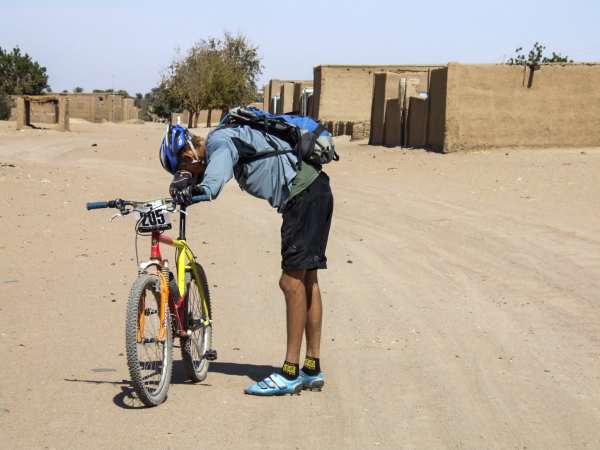
The Tour d’Afrique can be tough on the riders
There are hundreds of sites on the internet that will list first aid supplies and thousands of commercial products and pre-made kits available on the market today. The lists have a habit of producing massive kits capable of running a field clinic, whereas anyone who has bought pre-made first aid kits will tell you that you usually get a super flashy bag stuffed with band-aids and a dozen triangular bandages. Before we proceed, it is important to note that this is geared towards the needs of a TDA rider. First aid kits are highly situational, and need to be tailored for individual needs and activities. Due to the limited storage capacity on a non touring equipped bicycle, a practical first aid kit needs to be small and multipurpose. Anything much larger than a closed fist will generally get left behind by most riders. There are a number of small first aid bags available on the market, but anything that is easy to find, identify and access is more than adequate. Small purses, toiletry bags or even ziplock bags have all been used to great effect. An excellent way to start is to look where and how you would keep the kit on the bike and work backwards from there; the small under the saddle tool bags quite often have enough room for a decent first aid kit.
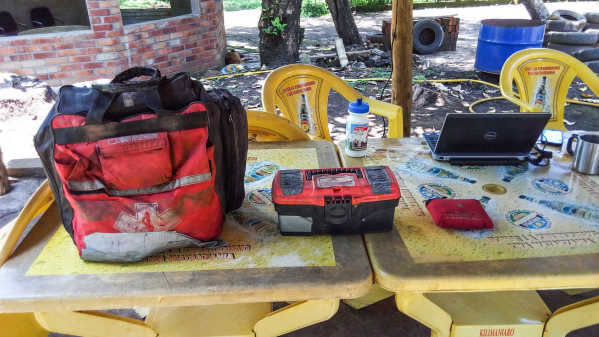
Three different sizes of first aid kits. The tiny one on the right contains all of the equipment mentioned in the article, and has seen action dozens of times, in everything from splinters to car crashes. The large one, despite Having the equipment to deal with large scale or serious emergencies, has never been used. A kit that is on scene is always better than one that is ten miles away.
The first step in determining what you need is to think of what is most likely to happen, and what you would need to deal with those eventualities. While it is easy to think of a worst case scenario, designing a kit to deal with that particular situation will give you a bloated and not very helpful kit. A small kit designed for common injuries with be used more often, actually be present for both situations, and, if designed right, will provide tools to deal with the worst parts of the larger situations. The reality is that the most common injuries for cyclists are generally small wounds to the hands and legs, usually from tools, road clutter or the sharper parts of the bike. The first aid kit can be easily divided into two conceptual sections- small wounds and abrasions, major wounds and issues and others. (AKA bits and bobs)
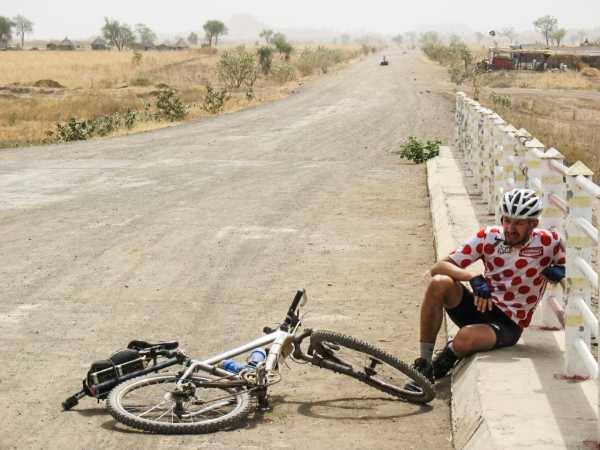
Exhausted
Small wounds and abrasions
These are the every days cuts and abrasions that will make up about 90% of the times your first aid kit is accessed. These are the kind of thing that you fix up on the way and keep biking. Such wounds can be dealt with using the three C’s- Clean it, close it, cover it.
Clean it- Small wounds and abrasions can be incredibly dirty, especially when they were caused by things like road gravel or chainrings. It is always a good idea to clean wounds before dressing them. Generally speaking, any water clean enough to drink is clean enough to rinse superficial wounds, so a well maintained water bottle already has this functionality somewhat covered. Small alcohol wipes are also lightweight, small, and multipurpose and are excellent for cleaning wounds after a quick rinse. In warmer or wetter climates, a small tube of antibiotic ointment such as Polysporin will more than justify a spot in any first aid kit.
Close it- Small lacerations will often be adequately closed and covered by band aids; the common mistake in first aid kits is to take an enormous amount of them. Generally speaking, if you need more than half a dozen band aids, you need something else. Butterfly closures or steri-strips are indispensable for wound management and are essentially weightless. Also in this section are a few other types of dressings, including non adhesive and transparent dressings, both of which are magnificent for the kind of small wounds and abrasions cyclists commonly receive.
Cover it- A small roll of two inch roller gauze takes up almost no space, but is large enough to cover and secure sizeable wounds. Two or three sterile 4×4 inch gauze sheets can work for covering or cleaning wounds, or to apply pressure to larger wounds. A small bit of tape is also an excellent addition. The key here is to either find an almost finished roll and compress it, or take a few feet of tape and wrap it around a pencil stub. (which is also a great thing to have)
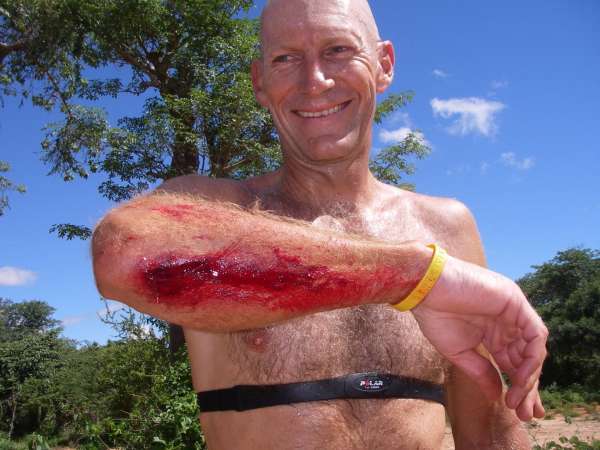
Ouch.
Major wounds and other issues
These are the injuries that end a trip and require escalation to a higher level of care. The key thing to remember here is that the object is to stabilize and transport; complete treatment is beyond the scope of a small first aid kit and the normal layperson. Generally, this kind of injury results from a major crash, animal or human attack, or exacerbation of a medical condition. These are much rarer than the event covered in the previous section, and so it can seem harder to justify spending precious space on equipment that will probably never be used. However, most of the equipment used for minor wounds can be used to great effect on larger, more serious ones. Much of the rest can be improvised. This section will be divided into wounds, fractures, and medical conditions.
Major wounds
For larger wounds, effective management is more important than equipment. Bulky dressings are simply not practical for the type of first aid kit addressed in this article. The gauzes that are in the kit to deal with minor wounds can be applied to major wounds quite effectively; the technique of applying effective direct pressure will minimize or stop the bleeding from most larger wounds. If a bulky dressing is required, the gauze can be back up with improvised bulk such as clothing. The important thing to remember here is to ensure that the most sterile part of the system (the gauze) is the part contacting the wound. The research supporting or condemning the use of tourniquets changes from year to year, but they are easily improvised from clothing or triangular bandages, and when it comes down to it, potentially damaging a limb is generally preferable to bleeding to death.
Fractures
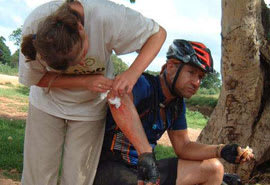
Clean it out
Carrying splinting material is simply not practical in a small kit. Luckily, they can be improvised in almost any environment with a little ingenuity. Sticks, boards, rolled up newspaper; pretty much anything can be made into an adequate splint. The same can be said about fastening a splint to a limb; clothing, belts, string, tape, and even strips of tree bark can all work very well. The only piece of gear I would recommend adding for this section is a triangular bandage. They are small, light, and have hundreds of uses. One is usually enough for a kit of this scale.
Other medical issues
Medical conditions can create challenging and interesting first aid situations. A few of the most common ones can benefit greatly from the timely application of first aid. One of the greatest examples of this is a small face shield for CPR. While the odds of coming across someone in cardiac arrest on any particular outing is small, being ready to perform safe and efficient CPR is critical.
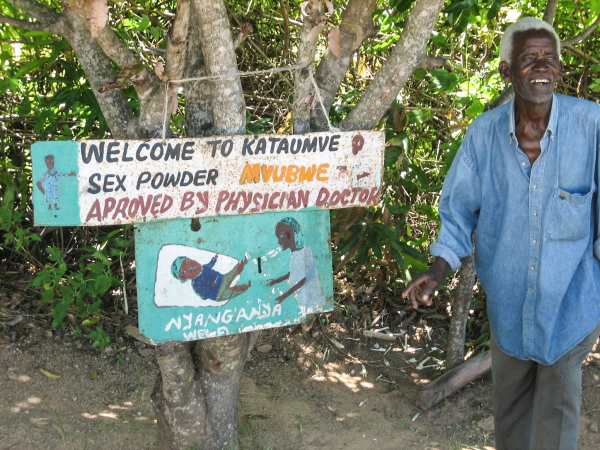
Local pharmacy
Pharmaceuticals
One of the most commonly overlooked aspects of first aid are pharmaceuticals. Time and time again, I am approached by riders who, despite having sizeable first aid packs with them, need an analgesic or anti-diarrheal. A first aid kit should be able to provide for your medical needs, no matter what they are. When travelling in a foreign land, what is more likely to happen: a car crash or some diarrhea? Small pill sorting containers are available at drug stores, and can add a massive amount of functionality to a first aid kit. You only need a few of each one, and they add very little bulk to a kit. A small bit of crumpled paper can be added to each section to prevent the pills from being damages with movement, and a little label should be added to make the name, purpose and dosage of each drug easy to tell. The following are a few handy things to have in a kit.
Antihistamines
Great for allergies, and essential for prehospital care of anaphylaxis. (due to size, cost, and legal liability, it is not recommendable to carry an epi-pen for anyone but yourself or someone close to you)
Painkillers
Most over the counter painkiller come from a family of drugs called non steroidal anti inflammatories. They are generally quite effective, but do not affect a person’s judgement or level of consciousness. This makes them ideal for a personal first aid kit. Many have other properties, such as reducing inflammation or fevers.
Anti Diarrheal
For travelling, this speaks for itself. Pretty much mandatory.
Anti-Emetic
Also a great thing to have while travelling. This and the anti diarrheal will probably be used more than the rest of the kit put together.
Muscle relaxer
If you are prone to muscle spasms or have some kind of ongoing back issue, you will likely want a small amount of muscle relaxants. Just keep in mind that many drugs in this class can affect judgment and coordination.
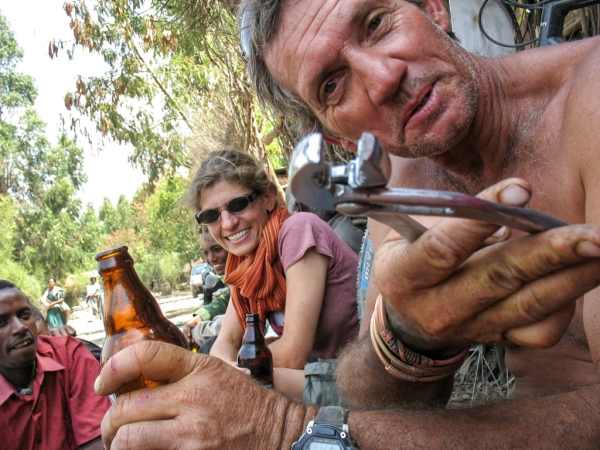
Tour dentist
I hope this has shed some light on how to create a small but multi-purpose first aid kit. It is good to be prepared for anything, but small kits that are actually there when you need them see more action and do more good than monstrous, prepper style jump kits.
 REGISTER NOW
REGISTER NOW

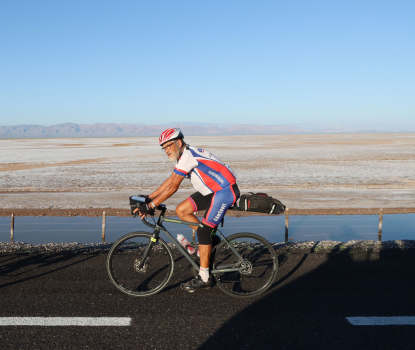

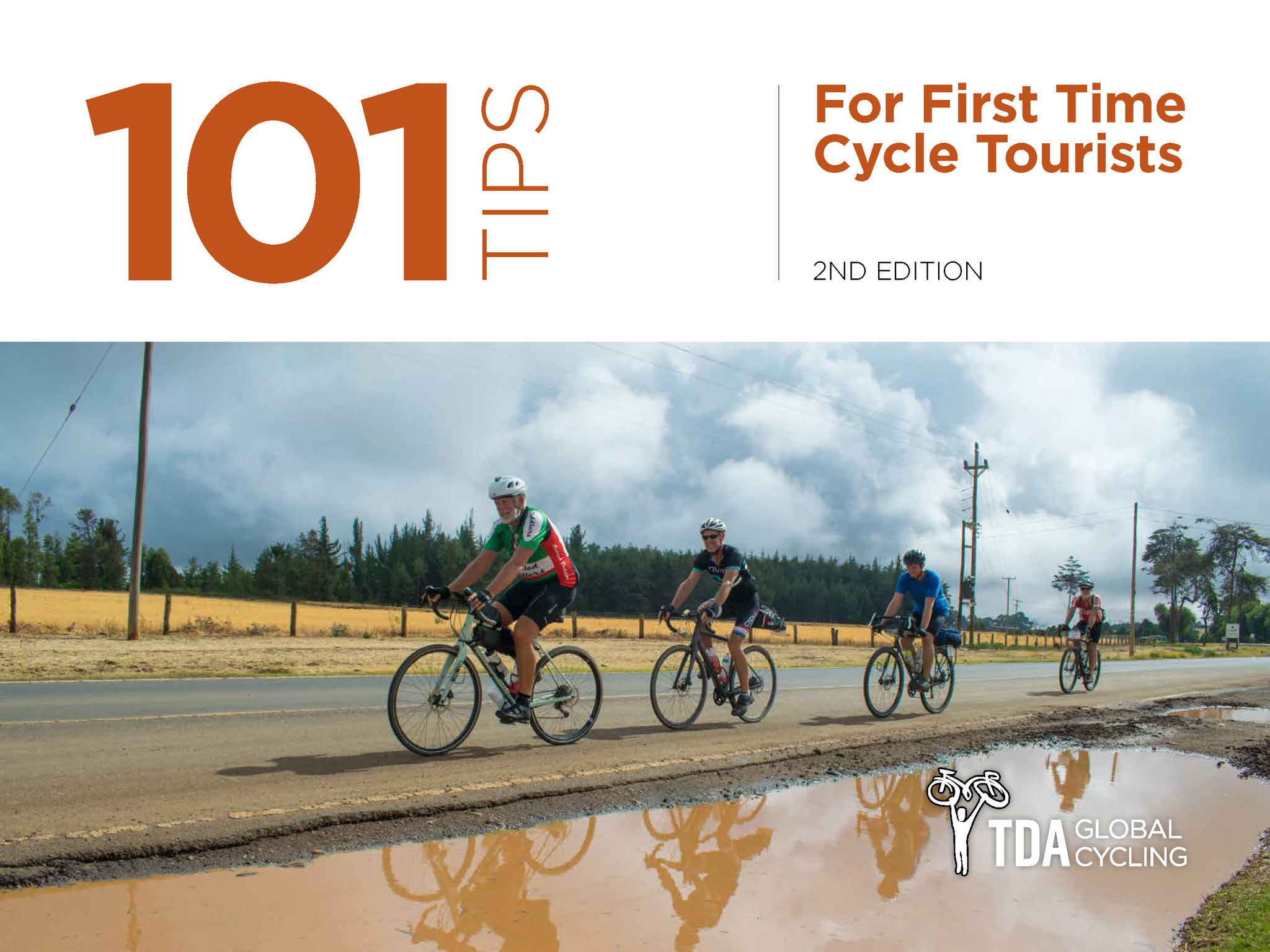
Leave a Comment for "Working as the Medic on the Tour d’Afrique"